
On June 22, 1941, the Great Patriotic War began in the USSR, which, for Western countries, is known as the Eastern Front of World War II. In three days, on June 25, an editorial team was created to release propaganda posters, which were called ‘TASS Windows’.
The members of the Moscow organization of the Artists’ Union were the authors of the idea – Mikhail Cheremnykh, Nikolai Denisovsky and Pavel Sokolov-Skalya. They proposed to make posters combining a bright illustration and a trenchant military-themed quatrain. The posters were supposed to raise the morale of the Red Army and the workers on the homefront. The main artists of the association were the famous ‘Kukryniksy’ – a collective of artists composed of Mikhail Kupriyanov, Porfiri Krylov and Nikolai Sokolov.
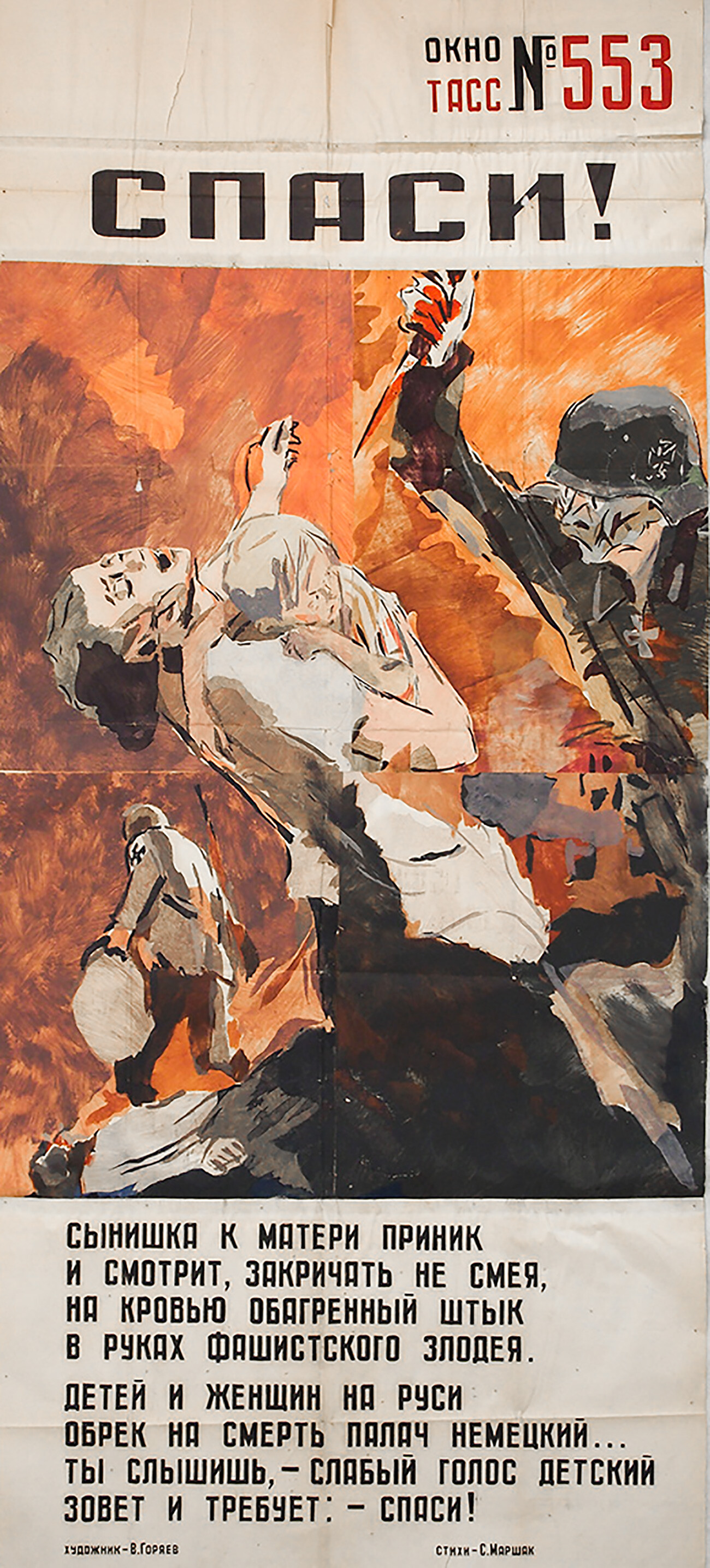
SAVE US! A son curled against his mother; He watches, daring not to scream The bloodied bayonet In the hands of the Nazi villain. Children and women of Russia Were doomed by the German slaughterer… Do you hear it – a weak voice of a child Calls for you and demands: - save us!
V.Goryaev/TASSTASS stands for ‘Telegrafnoye Agentstvo Sovetskogo Soyuza’ (‘Telegraph Agency of the Soviet Union’) – all the bulletins of the Information Bureau went through this publication, so the agency received news faster than anyone. As such, TASS was responsible for the publication content control and the speed of its release.
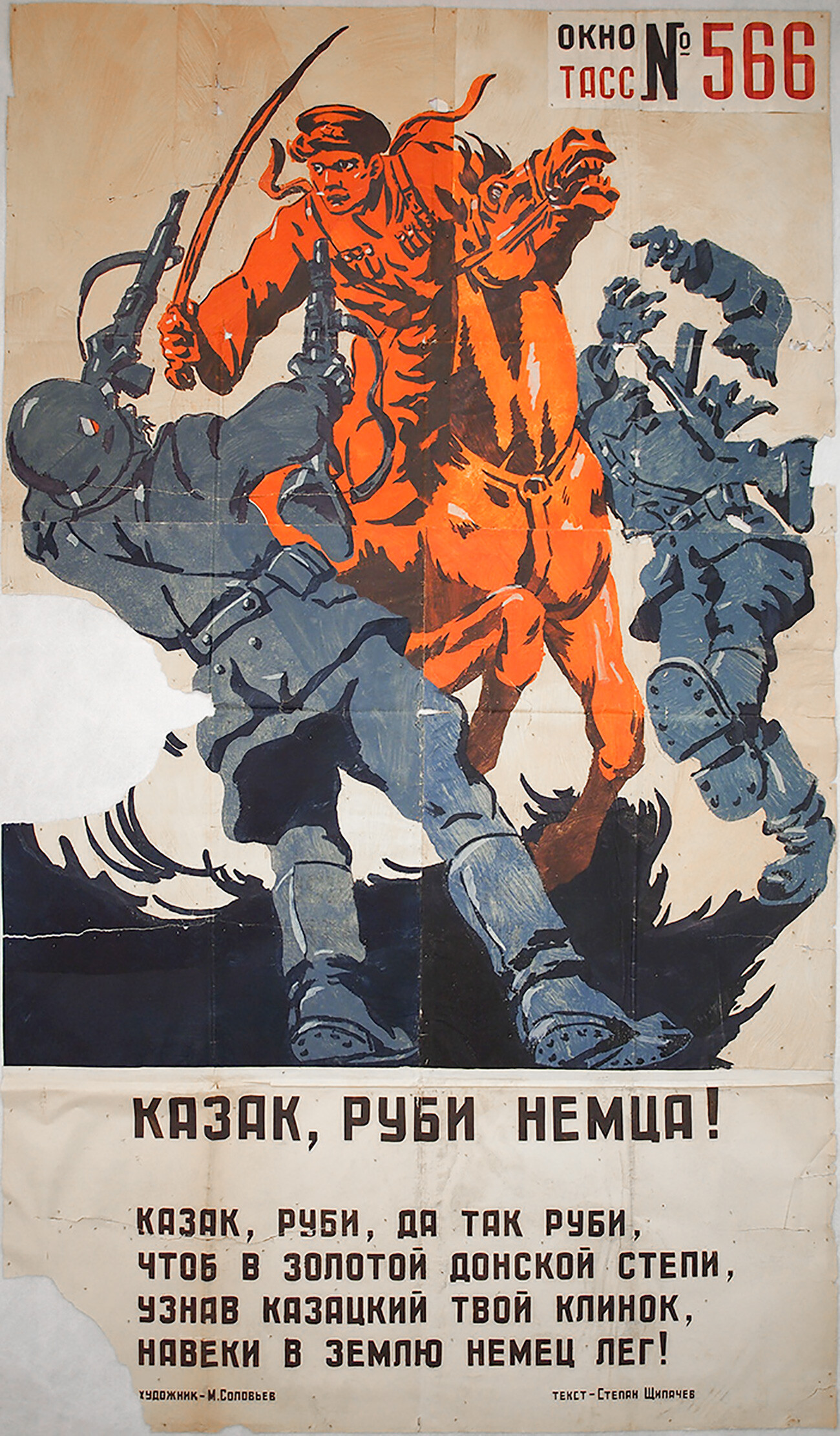
COSSACK, CUT DOWN THE GERMAN! Cossack, cut and cut so well, That in the golden Don steppe, Having tasted your blade, The German would be forever laid to rest!
M.Solovyev/TASSThe military posters received their name as the continuation of the famous revolutionary ‘ROSTA Windows’. These propaganda posters were created during the years of the Russian Civil War in support of the Red movement by the same agency, which, at that point, was called ROSTA, short for ‘Rossiyskoye Telegrafnoye agentstvo’ (‘Russian Telegraph Agency’). They were placed on empty storefronts, for which they were known as “windows”.
![DEATH TO THE KILLERS OF CHILDREN!
[...]
Without a mother or a father
The two little fledglings stand,
Two orphaned children.
They don’t have much time to live:
Their murderer has already cocked his gun.
[..]
For the blood of the children, for our honor -
avenge!](https://mf.b37mrtl.ru/rbthmedia/images/2023.04/original/644bae50e252ec16272d579b.jpg)
DEATH TO THE KILLERS OF CHILDREN! [...] Without a mother or a father The two little fledglings stand, Two orphaned children. They don’t have much time to live: Their murderer has already cocked his gun. [..] For the blood of the children, for our honor - avenge!
V.Ayvazyan/TASSThe work in the editorial team was organized harshly: no more than 24 hours passed from the production of the original to the release of the finished poster; no more than 10 colors were allowed to be used in the illustration. Five hundred and sixty artists worked in the collective at one point. The work was organized in three shifts, with up to 1,000 posters released per day.
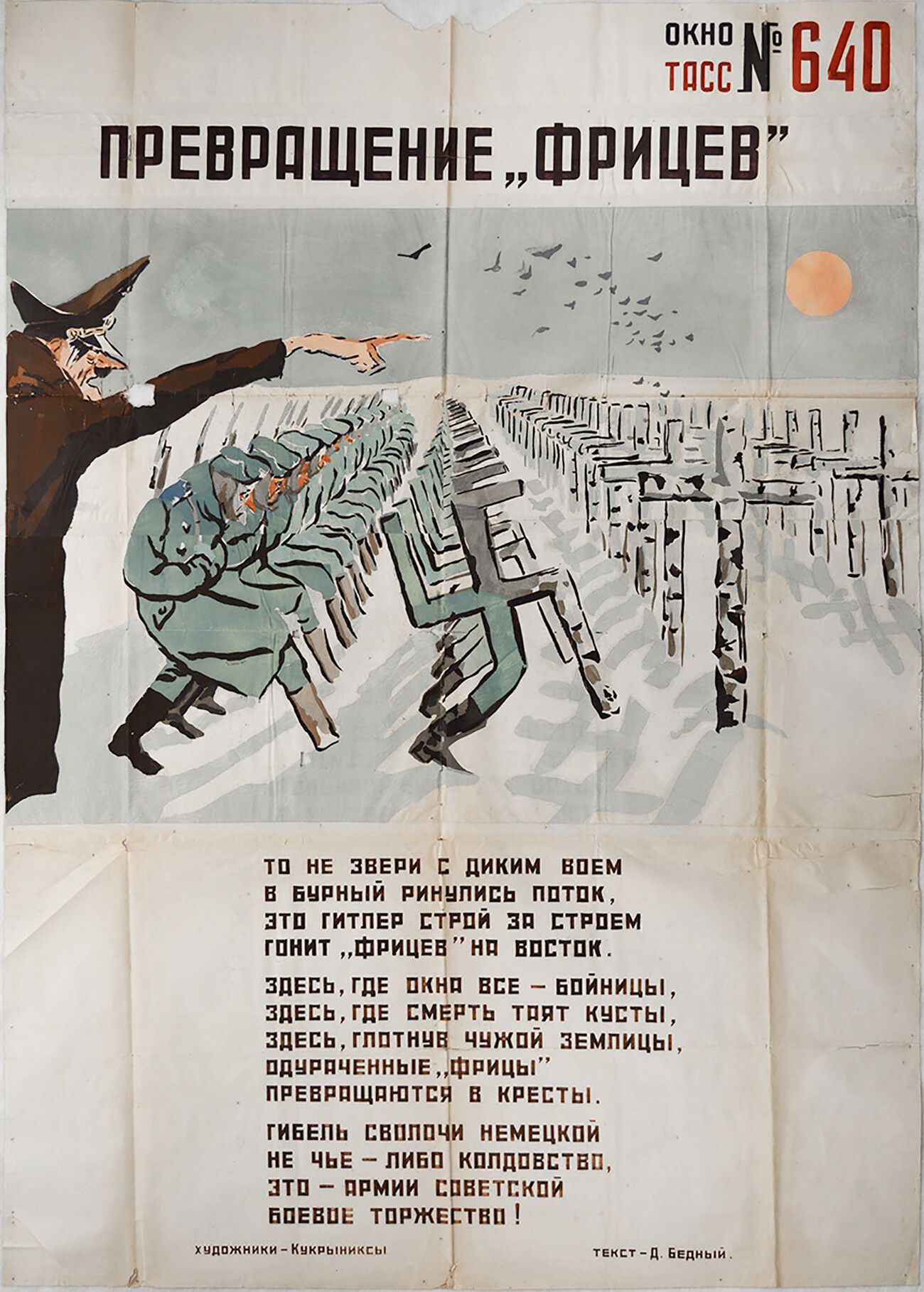
Those are no beasts Who rush into a raging stream With a wild wail, It’s Hitler driving the “Fritzes” Row after row to the East. Here, where every window is an embrasure, Here, where every bush hides death in it, Here, eating foreign soil, The fooled “Fritzes” Turn into crosses.
Kukryniksi/TASSThe “Windows” were printed using stencils – a manual method of printing, when paint was applied to a cutout area of a stencil, after which the stencil was removed. Less labor- and time-consuming methods could have been used, but then the posters wouldn’t have been so vivid.
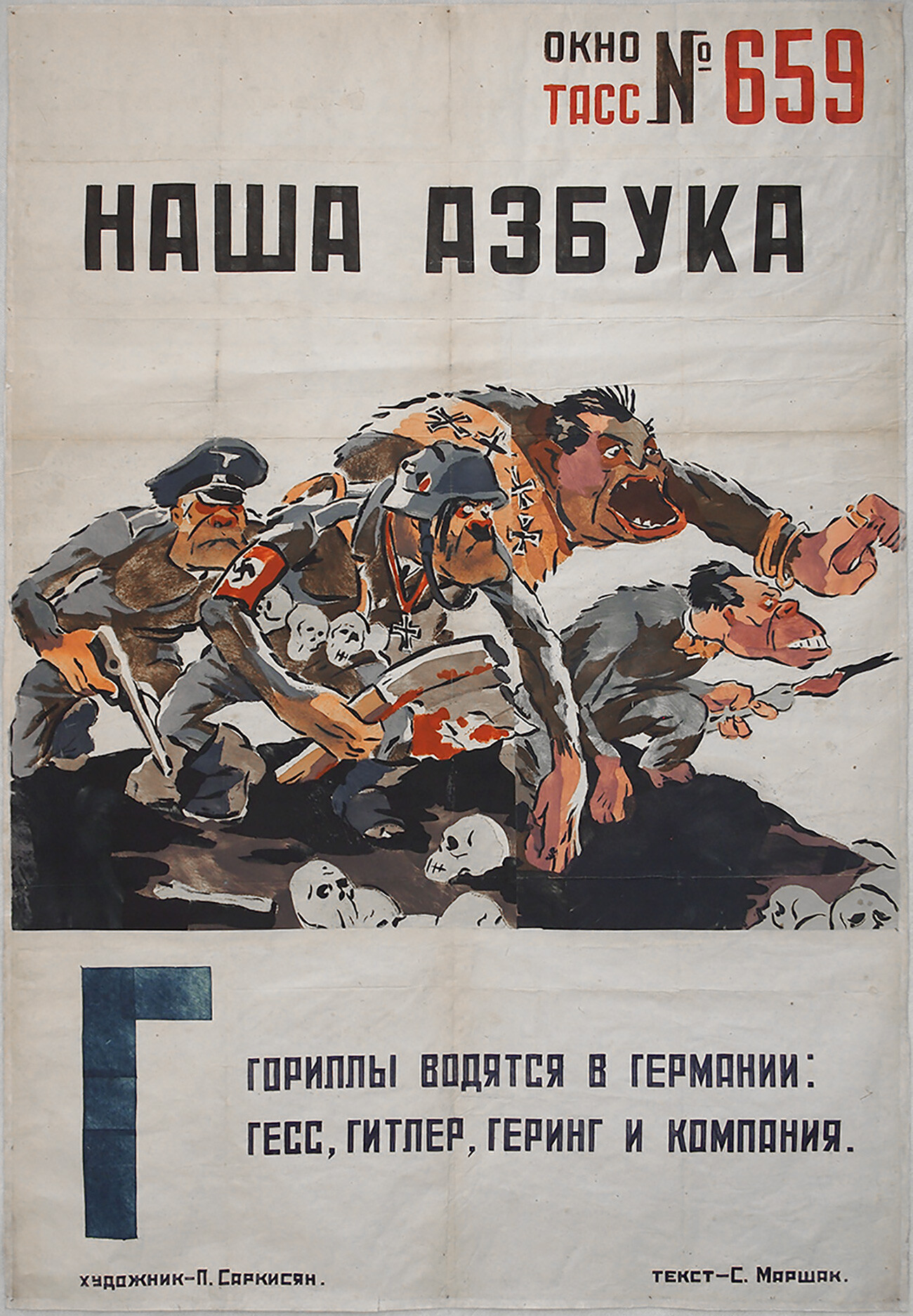
OUR ALPHABET G – Gorillas live in Germany: Hess, Hitler, Göring and the rest.
P.Sarkisyan/TASSFrom June 25, 1941, to December 29, 1946, 15 million posters were produced. They were sent to the front, put up onto bulletin boards, lamp posts, storefronts and fences. For partisans, special small posters were made – 30 by 20 centimeters in size.
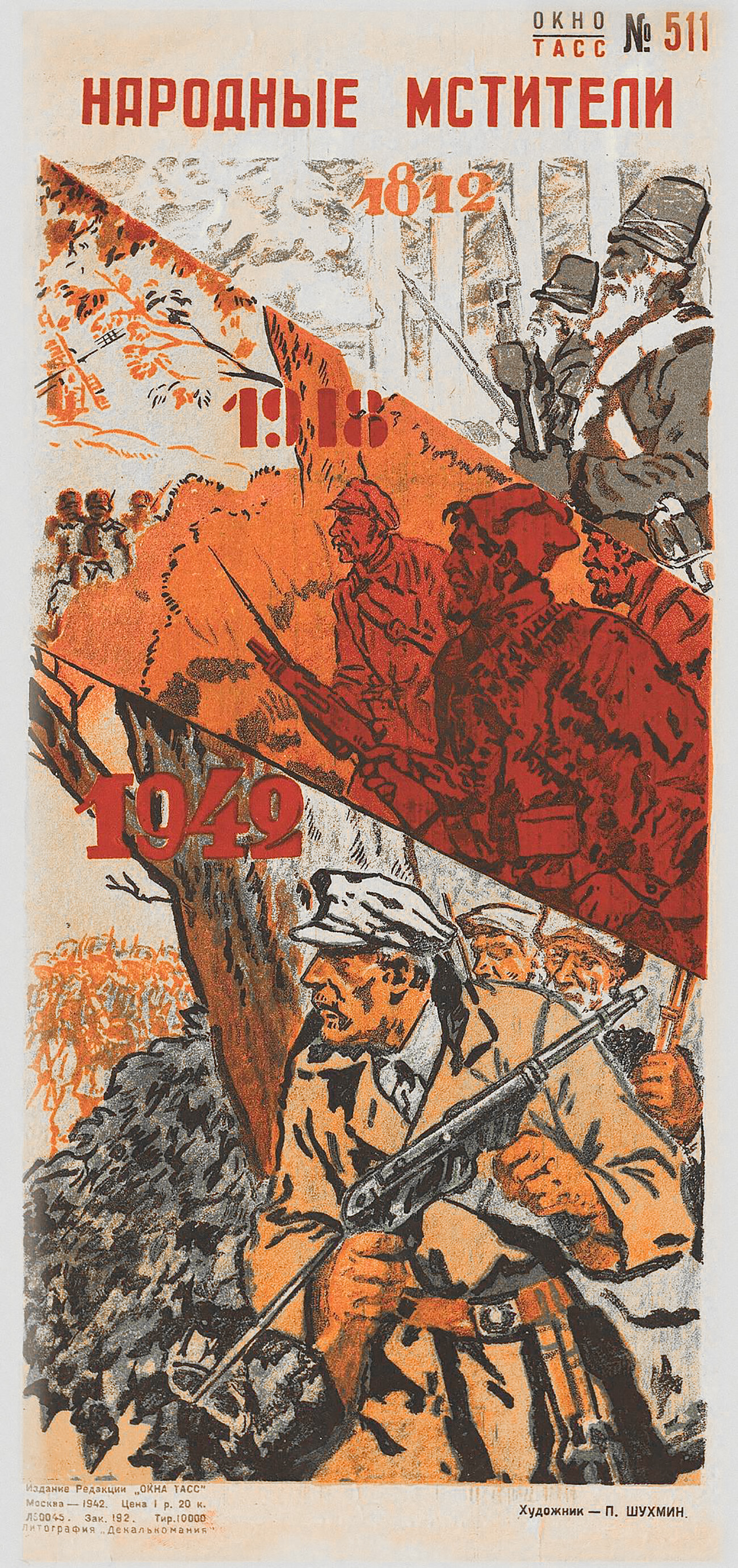
NATIONAL AVENGERS.
P.Shumikhin/TASS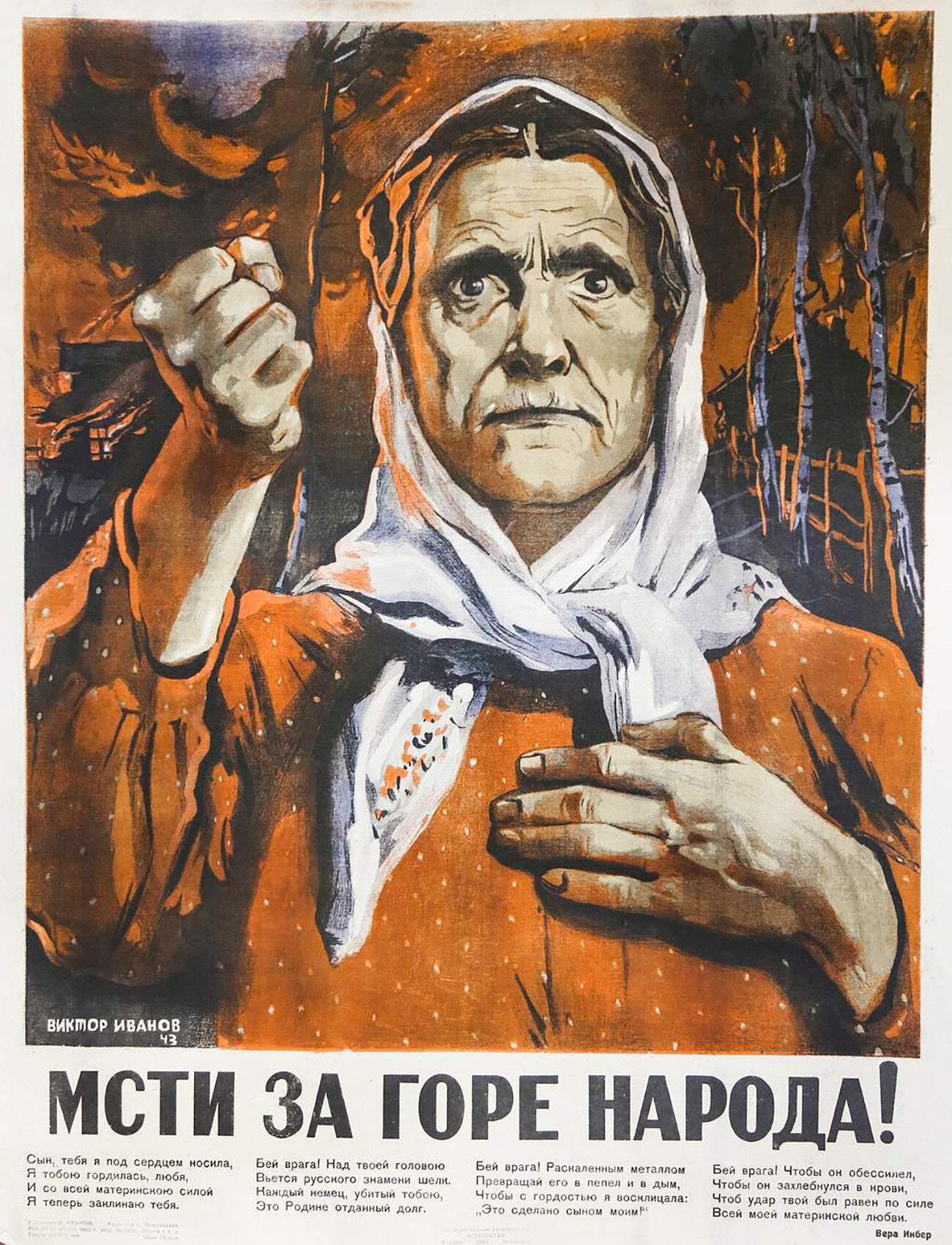
Son, I borne you under my heart, I was proud of you, loved you, And now with all my motherly strength I implore you, Strike the enemy! Over your head Flutters the silk of the Russian flag. Every German, killed by you, Is your debt to the Motherland, paid.
V.Ivanov/TASSIn reality, there were most likely many more posters. Editorial collectives similar to the Moscow one, but under different names, were created in different cities of the USSR: Leningrad (today – St. Petersburg), Irkutsk, Kuybyshev (today – Samara), Gorky (today – Nizhny Novgorod), Perm and others.
Joseph Goebbels, the Minister of Propaganda of Nazi Germany, was furious at the posters that ridiculed the German Army. So much so that he sentenced all the workers from the “Windows” editorial team to death in absentia. Duplicates of the posters were sent overseas, so the mocking caricatures became famous throughout the world.
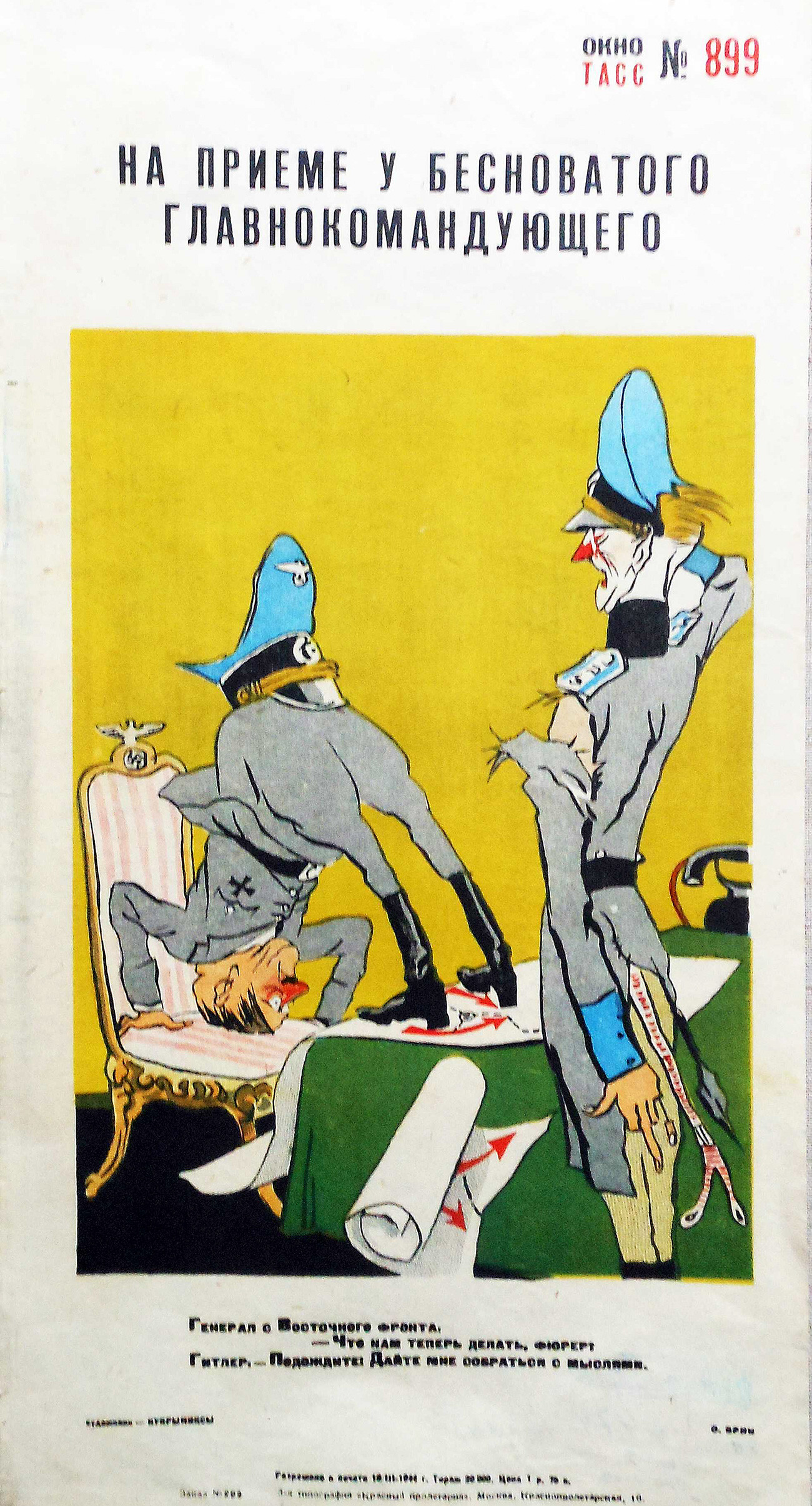
AT A RECEPTION WITH A LUNATIC COMMANDER-IN-CHIEF A general from the Eastern Front: - What do we do now, mein Führer? Hitler: - Wait! Let me gather my thoughts.
Kukryniksi/TASSWe can trace the most important events in the history of the Great Patriotic War with ‘TASS Windows’: many of them were dedicated to heroic deeds and battles. For example, the poster below is dedicated to the feat of pilot Nikolai Gastello: his aircraft was hit and caught fire. Instead of leaving the aircraft, he aimed it at a column of enemy armored vehicles and blew up with it.
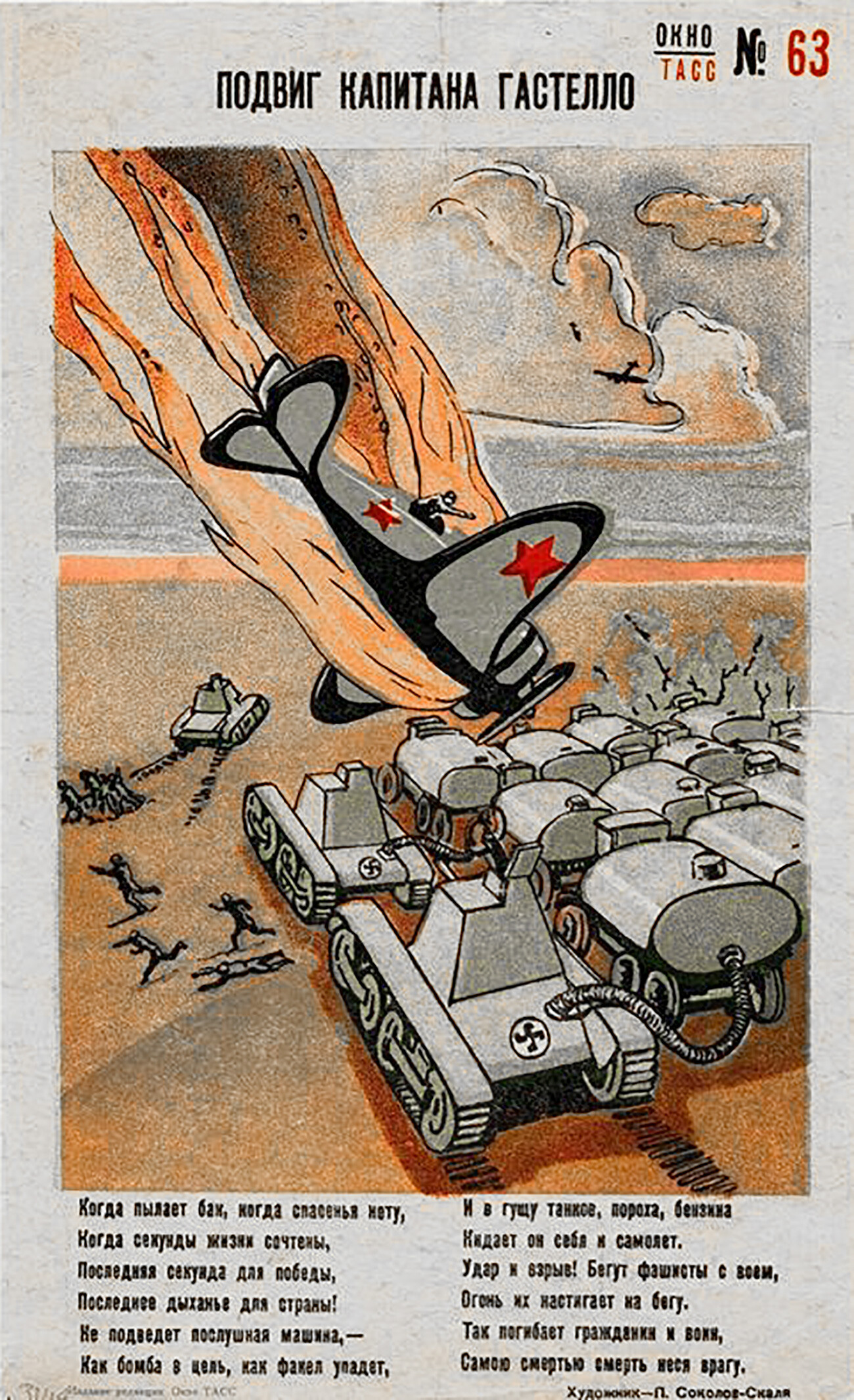
THE HEROIC DEED OF CAPTAIN GASTELLO When his fuel tank was aflame, when there was no salvation, When he was counting his last seconds The last second he gave for victory, His last breath – for the country!
P.Sokolov-Skalya/TASSThe editorial teams continued to release posters, despite harsh working conditions. During the Battle for Moscow, due to a deficit of an oil solvent, the artists worked with turpentine and acetone. Because of war blackouts, it was prohibited to open windows at night and, during night shifts, three to six workers would be taken away by ambulance, due to poisoning.
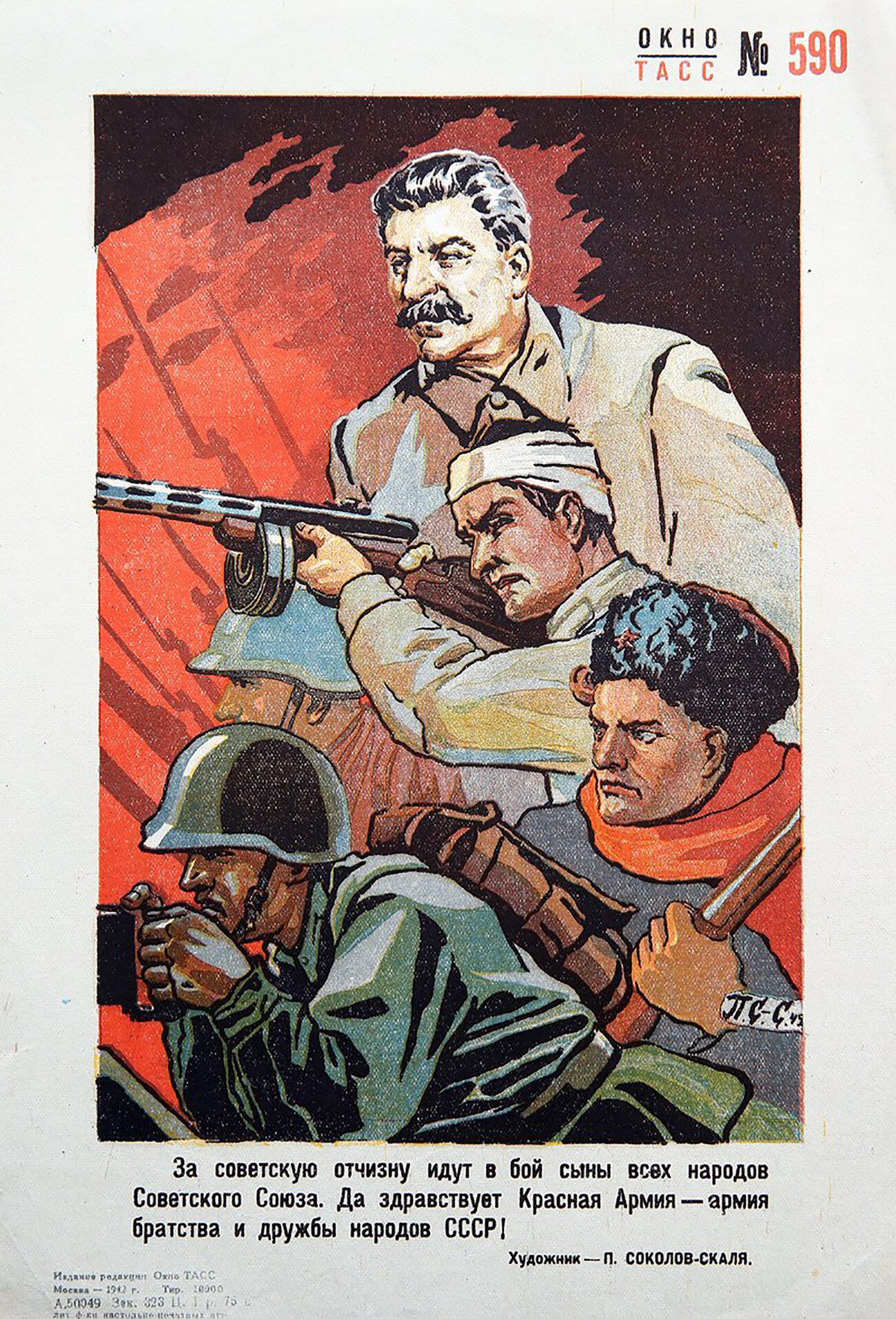
For the Soviet Fatherland, the sons of all nations of the Soviet Union go to battle. Hail the Red Army – the army of the brotherhood and friendship of the peoples of the USSR!
P.Sokolov-Skalya/TASSIn Leningrad during the blockade in Spring 1942, only one worker was left in the office – Vasily Selivanov. He performed the duties of both an artist and editor; he also put up the posters himself. Selivanov created 108 “Windows”, each with up to 3,000 copies.
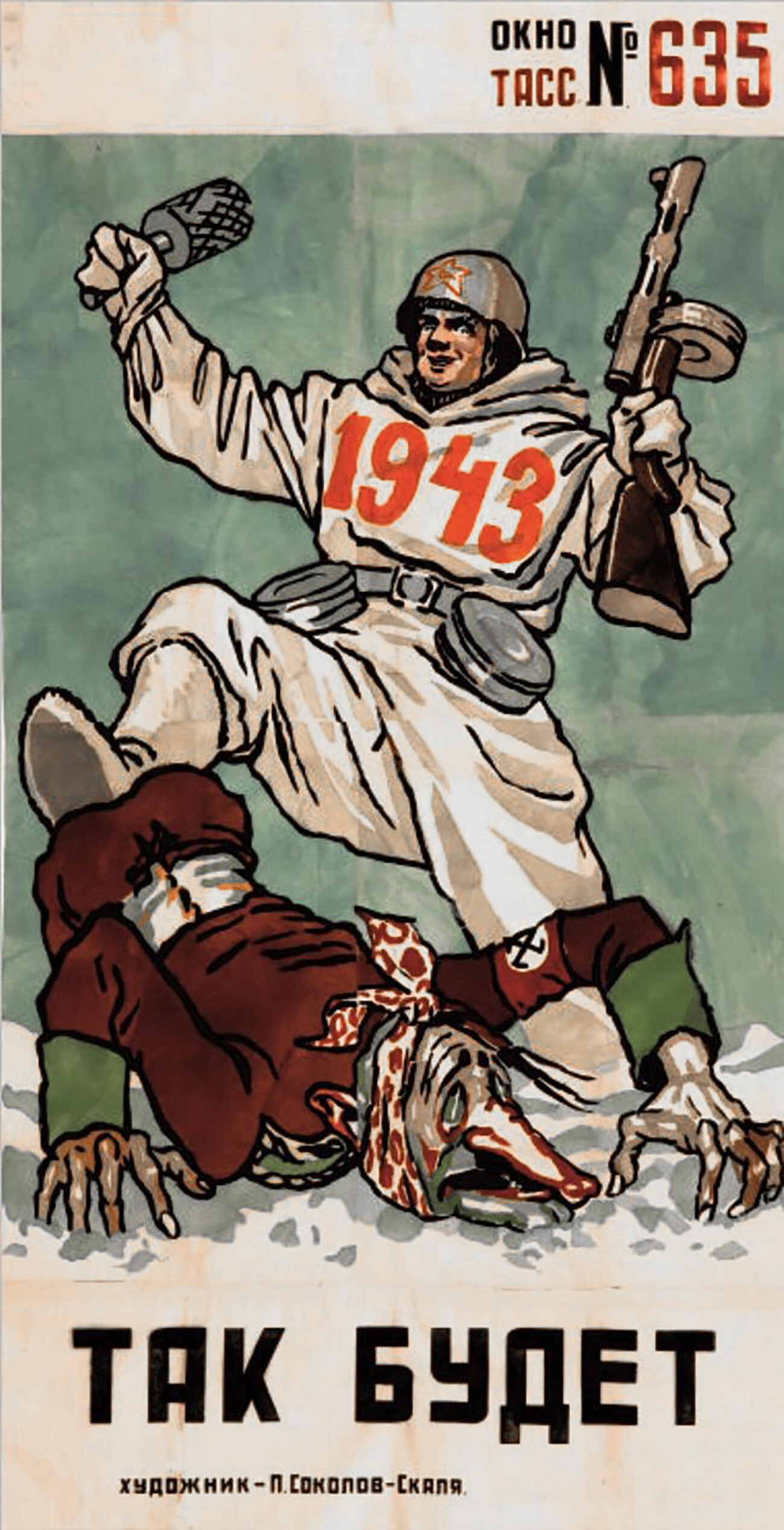
AND SO IT’LL BE.
P.Sokolov-Skalya/TASSSome of the workers of the Moscow office received state prizes and were awarded ‘For the Defense of Moscow’ medals.
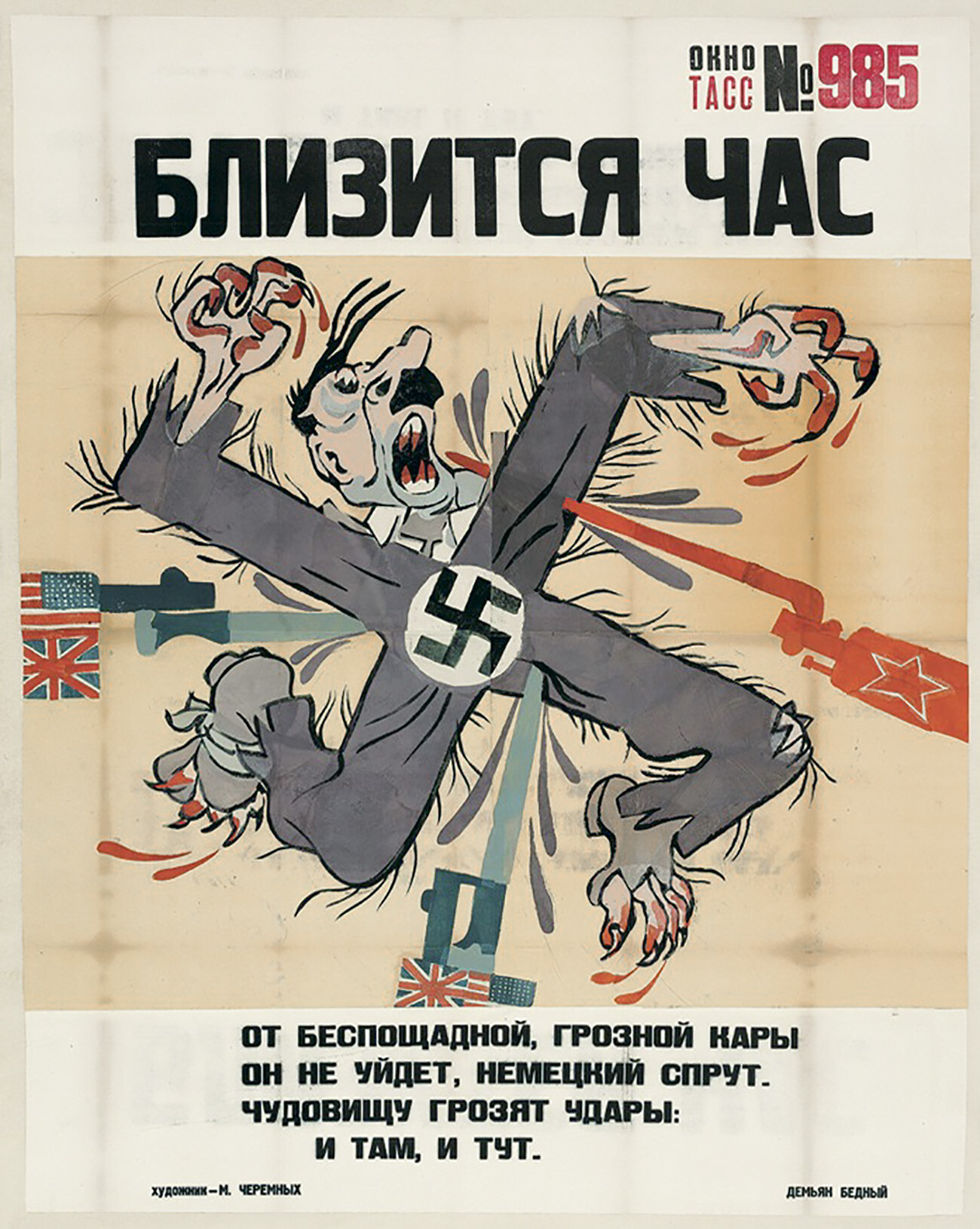
THE TIME IS NIGH From a ruthless, fearsome retribution He won’t escape, the German Kraken. Strikes are aimed at the monster: From here and there.
M.Chernykh/TASS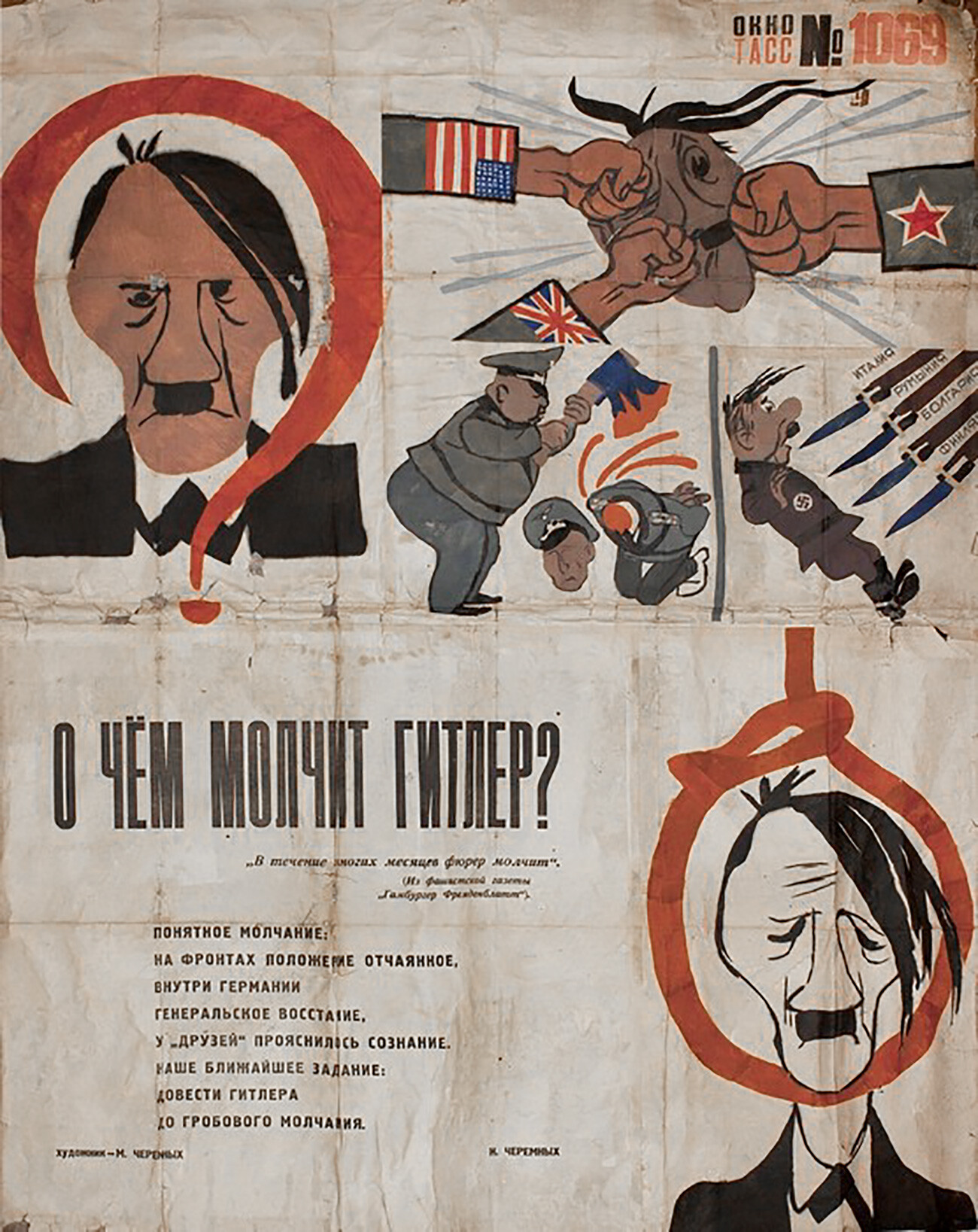
WHAT IS HITLER SILENT ABOUT? His silence is understandable: The situation on the fronts is dire, A generals’ rebellion Rises in Germany, His “friends” have a sudden clarity. Our task at hand: Turn Hitler’s silence Into grave silence.
M.Chernykh/TASSDear readers,
Our website and social media accounts are under threat of being restricted or banned, due to the current circumstances. So, to keep up with our latest content, simply do the following:
If using any of Russia Beyond's content, partly or in full, always provide an active hyperlink to the original material.
Subscribe
to our newsletter!
Get the week's best stories straight to your inbox